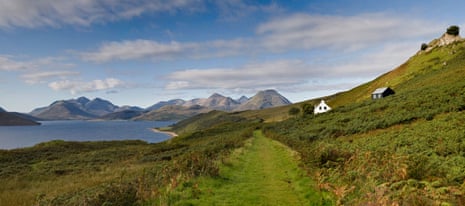Raasay Gallery B&B, Isle of Raasay, Inner Hebrides
From Skye, you have to jump on a ferry for Raasay, Skye’s laid-back neighbour, but it’s worth the 25-minute boat ride from Sconcer on the east coast. Rugged Raasay still feels relatively undiscovered – despite its smart new distillery-with-rooms.
Raasay – Gaelic for Isle of the Roe Deer – is 14 miles long by five wide and its landscape of craggy peaks, bosky woodland (a novelty on Scotland’s largely tree-free islands) and secluded bays is pricked with ruined castles and ancient brochs. The restaurant at Raasay House hotel dishes up island venison and Sound of Raasay langoustines. It’s the only hotel on the island, but an interesting alternative is the room above a small art gallery. Tour guide Christa Welser and artist Gordon Cheape visited Raasay a few years ago, fell in love with it and opened a gallery in the hamlet of West Suisnish, with a spectacular view over to Skye.
Sleeps 2, £85 B&B, two-night minimum, raasaygallery.co.uk, available 24-31 July, 11-17 and 25-29 Aug, 1-9 and 15-25 Sept
Baleshare Bothies, North Uist, Outer Hebrides
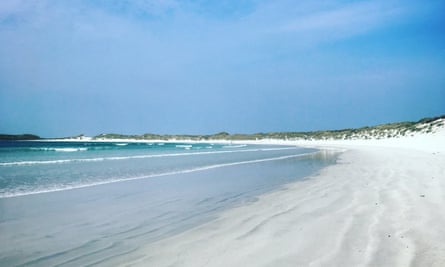
On an island off an island in this remote archipelago, these two new glamping pods opened this year: Heisgeir (another name for the nearby, uninhabited, Monach islands) and Hiort, the Gaelic name for the largest island in the St Kilda archipelago. Just a Frisbee’s throw from the shore, with views out over the Atlantic, the simple, purpose-built pods sleep two comfortably or four at a push, are dog-friendly and come with a picnic table and firepit, so after a day’s exploring you can watch the sun sink into the sea with a local sundowner – perhaps a Downpour G&T from artisan North Uist Distillery nearby.
Tiny (3.5 square miles), flat and tidal, Baleshare is accessed via a causeway from North Uist. The Outer Hebrides are famous for their spectacular sweeps of powdery white sand – so spectacular, that a beach on Berneray was caught doubling as a tropical island idyll in a Thai holiday brochure back in 2009. And Baleshare has one of the best: on its western shore is an endless stretch of white sand backed with machair (a unique carpet of wildflowers and grasses). Other beachcombing spots include Cula Bay on Benbecula – a haven for wading birds such as oystercatchers, lapwings, snipes and ring plovers – and Balranald, with its RSPB reserve. For traditional live music and good pub grub, the Westford Inn on North Uist does crofters’ platters of smoked fish and cheese, and local langoustines, lemon mayo and chips.
Sleep 2-4, from £90 a night, two-night minimum, coolcamping.com, limited availability until September
Timber Cottage, Eilean Shona, Argyll
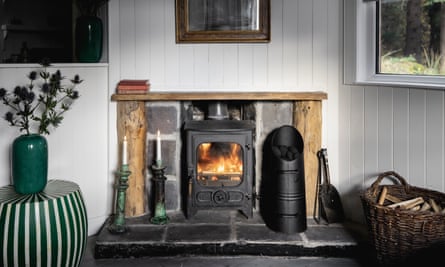
Vanessa Branson’s private island retreat in Loch Moidart off the west coast includes nine cute cottages (three gas-lit and off-grid, all with firepits) and the nine-bedroom house. The latest addition, Timber Cottage, is a bijoux bolthole for two 10 minutes’ walk from the jetty – where guests arrive after a short private boat transfer from the mainland. Inside it’s fresh, bright and light, all whitewashed tongue-and-groove, with a rolltop tub, open fire and splashes of colour from Moroccan textiles and rugs (Vanessa also owns a riad in Marrakech).
The two-square-mile island is said to be the inspiration for author JM Barrie’s Neverland and is perfect for feral fun: tramps over the heathery hills, crashing through tangled vegetation, lding campfires, rock-pooling and cooking pans of free mussels.
The secluded silvery sand of Shoe Bay is perfect for a picnic – as is a newly revamped picnic bothy. Hiking along the rocky coastline you’re likely to spot seals, sea eagles and otters, and in summer there’s a chance of glimpsing minke whales and basking sharks.
Sleeps 2, £1,100 a week, eileanshona.com, book ahead as availability very limited
Mangersta Croft, Uig, Isle of Lewis, Outer Hebrides
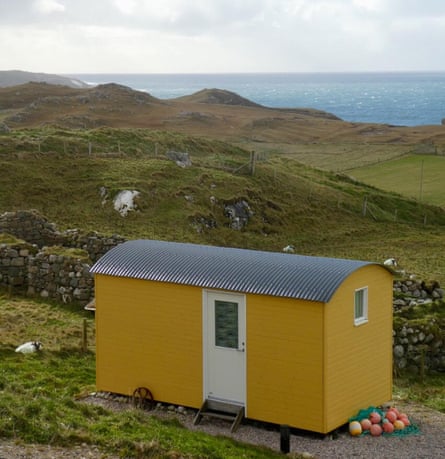
On the rugged Uig peninsula, on the west coast of Lewis, the northernmost Hebridean island, Mangersta Croft is home to artists Derek Scanlan and Elsie Mitchell, their studio gallery and a clutch of cute glamping options – two jaunty shepherds’ huts, one post-box red, the other mustard with pastel interiors, and two glamping pods, with a stone firepit hunkered into the hill. On the five-hectare (12-acre) working croft they grow crops and veg and have a small herd of aberdeen angus cattle and blackface sheep.
On the doorstep are the golden sweep of Mangersta beach and wild clifftops for hiking. Curve round the coast to the Mangersta sea stacks, or dip down to coves to go swimming, surfing and kayaking. Seatrek operates RIB rides and wildlife-watching boat trips (from £32pp) from the jetty at nearby Miavaig on Loch Roag, visiting the seal colonies around Berisay, caves and cliffs with nesting kittiwakes, and looking out for sea eagles and otters foraging on the shoreline. A five-minute drive away, with its picture windows framing Uig Bay, is Uig Sands restaurant, which offers seafood chowder and soda bread, locally smoked salmon with beetroot and ginger relish, and pan-fried Lewis cod with celeriac, roast fennel and a, roast fennel and mussel cream.
Sleeps 2-4, from £95 a night, mangurstadhgallery.com, limited availability in August, more from September onwards
Eigg Organics, Eigg, Inner Hebrides

To the south of Skye and one of the Hebrides’ Small Isles, Eigg is five miles long by three wide and home to about 100 people. It’s been run by a trust since a community buyout in 1997 and is groundbreakingly green. Eigg Electric supplies the island from the world’s first fully renewably powered electricity grid. To explore, hire a bike or kayak from Eigg Adventures, or just kick back and enjoy low-key island life. There’s a little grocery store and a restaurant with rooms, Lageorna.
In the north of the island, Eigg Organics is a working croft run by Sue Holland and Neil Robertson. The croft house is heated by locally grown and processed wood, the water – from a spring – by solar power. They grow their own veg, have hens for eggs and a flock of rare-breed Soay sheep, and offer croft tours and gardening courses. Accommodation is in a Mongolian yurt (sleeps 3) in a wildflower meadow with views over the sea to Rum or the old stone bothy (sleeps 4) – once a cattle shed – with woodburner and compost loo. Or there’s camping in the field.
Yurt from £60 a night, camping £7pp, eiggorganics.co.uk. Bothy available from late September
Braelee, Hamnavoe, Burra, Shetland

The tiny outhouse is attached to owner Helen’s cottage in the little fishing village of Hamnavoe on the island of Burra, linked to Shetland’s “mainland” by a bridge. She has done it up in quirky contemporary style with a mid-century vibe. Helen is a chef at cafe-bar the Dowry in the capital, Lerwick, a 15-minute drive away. On the menu are small plates of potted Shetland crab, pork crackling, pickled apple and fennel and soda bread, and fish stew with lemongrass, chilli and coconut.
Helen is about to start offering breakfast (with eggs from her hens) and dinner at the cottage. Her father’s a fisherman and menus will focus on his catch (lobster, crab and mackerel). Hamnavoe has a pretty harbour and a little shop where you can book a fishing or boat trip with Shetland Sea Adventures – whale-watching on the west coast or excursions to the island of Foula. There are coastal walks from the door – hike up to the lighthouse on Fugla Ness, or take a circular route from the harbour to Sands of Meal – one of Shetland’s most spectacular sweeps of sand. Banna Minn is another and a footpath from here leads to Kettla Ness headland – a birdwatching hotspot.
Sleeps 3, from £65 a night, on Airbnb, smattering of summer availability including late August, more from September
Iona Pods, Iona, Inner Hebrides

Iona is not off-the-beaten track – pilgrims have beaten a path to its shores for centuries: St Columba founded the abbey here with a handful of followers in AD563 and it has been dubbed the Cradle of Christianity. The Benedictine abbey reopened last month after a £3m restoration. Many who come are struck by the peaceful, almost mystical atmosphere – helped by the fact that visitors can’t bring their cars to the island.
The foot ferry from Mull across the Sound of Iona is less than a mile. After the daytrippers leave, the island takes on a different character and it’s worth staying longer to soak up the tranquillity. Iona Pods, a glamping site on a croft that has been in the same family for generations, has 10 cabins with views over the water to Mull and a 10-minute walk to the beach – the island’s beaches are also heavenly.
Sleep 4, from £50 a night (£80 in high season), ionapods.com, little availability until mid-September
The Storehouse, Kirkwall, Orkney
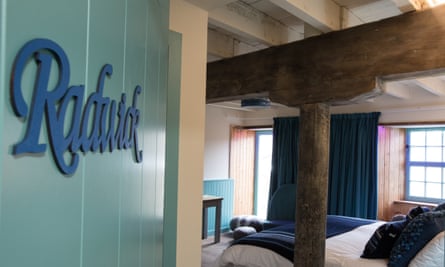
Heritage and history seep into every aspect of an Orcadian itinerary, the archipelago off Scotland’s north-east coast, with its 5,000-year-old Neolithic world heritage sites, including Skara Brae. Orcadian knitwear designer Judith Glue and her husband, David Spence, restored the Storehouse, a 19th-century building that was once a pork and herring curing station, then a printworks, converting it into a smart restaurant with rooms in 2018.
Much of the original wood and stone was rescued and reused and the huge wooden beams in the bar and first-floor bedrooms were salvaged from ship wrecks.
In the restaurant, chef Gayle Grieve dishes up local specialities such as hand-dived scallops – caught by her husband, Emlyn. There are eight rooms, each with a nod to the islands’ heritage and colour palette, such as Silver Darlings (an old nickname for herring) and earthy-hued Maeshowe, named after one of the Neolithic tombs and incorporating original wooden shutters and flagstone sills.
Doubles from £130 B&B, two-night minimum, thestorehouserestaurantwithrooms.co.uk, good summer availability
Hame Hotel, Dunvegan, Skye
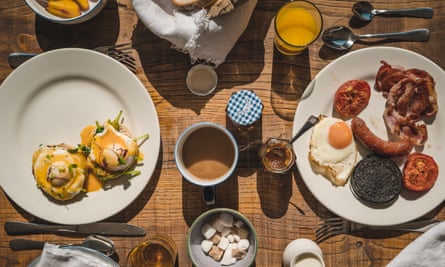
Even on Skye – where in the summer of 2017 visitors were begged not to turn up without accommodation as the island was “full” – there are some off-the-beaten-track hideaways. Hame Hotel, in the north-west, looks out over Loch Vattan towards the brooding Black Cuillins and is a few miles from Dunvegan Castle. Flora and Mungo Laing moved from London in 2018 to set it up after Calum MacKinnon, one of the brains behind Mac & Wild restaurants, stumbled on what he thought was the perfect spot for a new venture.
The couple renovated the property, turning it into an eight-room hotel in a mix of pared-back Scandi and Scottish design. Think: grey wool sofas, rugs and cushions from modern Scottish brand Anta, and artworks by Alasdair Hillery (Flora’s dad) and Jane Laing (Mungo’s mother). In the dining room, all pale wood and picture windows, guests tuck into breakfasts of homemade granola and fresh fruit, porridge and poached eggs with coffee from local roaster Caora Dhubh, and dinners of local venison, the neighbour’s beef and lamb and fresh-off-the-boat shellfish. They also organise regular retreats, from wild food foraging to yoga and painting workshops.
Doubles from £180 B&B, hamehotel.com, book ahead as availability very limited
Teacher’s Bothy, Isle of Gometra, Inner Hebrides
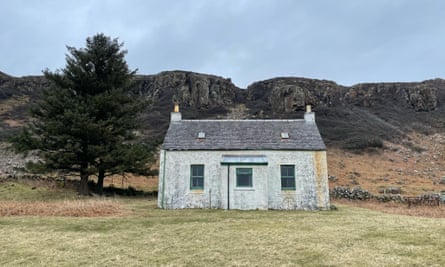
It’s no walk in the park getting to this tiny, whitewashed bothy, an off-grid hideaway for two on the small private island of Gometra, owned by environmental activist Roc Sandford, who also lives off-grid here for most of the year. After catching the ferry from Mull to the isle of Ulva, it’s an eight-mile hike in from the nearest road (Gometra is connected by a bridge – and by the beach at low tide – to Ulva).
